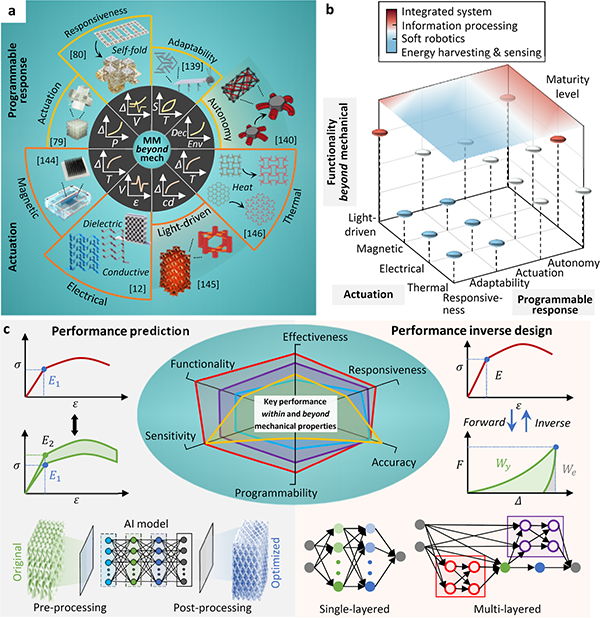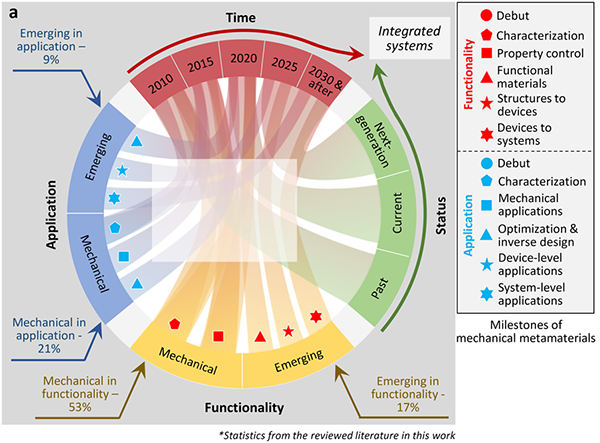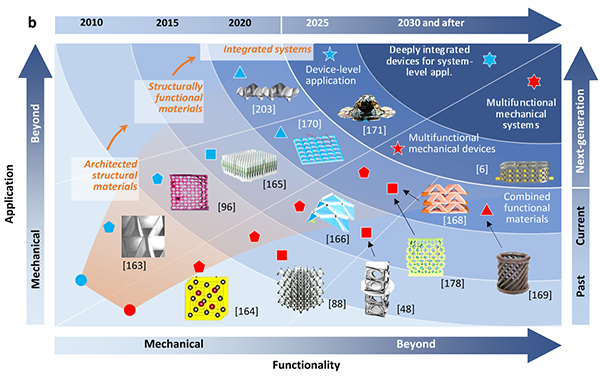NEWS
Scientists unravel the secrets of mechanical metamaterials
Recently, Dr. JIAO Pengcheng, a researcher from the Ocean College, Zhejiang University, published a review article titled “Mechanical metamaterials and beyond”in the journal Nature Communications.

Fig. 1: Mechanical metamaterials beyond mechanical properties.
Mechanical metamaterials, with their exceptional design of microstructures, have unveiled a world of remarkable and extraordinary mechanical properties. These materials are featured by negative Poisson's ratio, negative thermal expansion, negative stiffness, and controllable multi-stable responses. By leveraging these unique mechanical properties through precisely engineered microstructural units, mechanical metamaterials have found widespread applications in various engineering fields, including structures, aerospace, and biomedicine. Examples of their utilization encompass impact-resistant damping structures, energy-absorbing storage materials, morphable wings, self-deploying solar panels, and expandable cardiovascular stents.


Fig. 2: Roadmap toward next-generation intelligent mechanical metamaterial devices and systems.
In this groundbreaking endeavor, Dr. JIAO Pengcheng’s research team collaborated with prominent scholars, including Amir H. Alavi from the University of Pittsburgh, Jochen Mueller from Johns Hopkins University, Jordan R. Raney from the University of Pennsylvania, and Xiaoyu (Rayne) Zheng from the University of California, Berkeley. Together, they systematically examined the advancing frontiers of research in various areas, such as monitoring and sensing, environmental interaction, information processing and storage, data-driven AI predictions, and inverse design of mechanical metamaterials. Their review underlined the unrivaled performance of mechanical metamaterials. Additionally, they proposed visionary strategies for intelligent information through the medium of mechanical metamaterials, while addressing formidable technical challenges.
These challenges included achieving precision in the realization and fabrication of microstructural unit cells, developing the technology required for integrating functional devices with a variety of unit cells, ensuring the stability, durability, and biocompatibility of functional devices, and enhancing performance through optimization techniques based on AI predictions and inverse design. Furthermore, their vision extended to the potential of mechanical metamaterials, stressing their ability to autonomously acquire, process, and respond to external stimuli.
This work opened up new vistas of research in the realms of environmentally interactive and adaptive devices.

